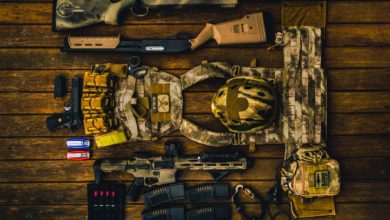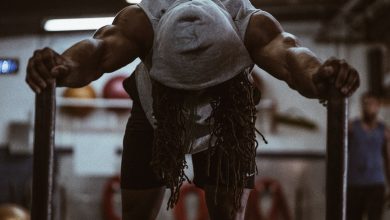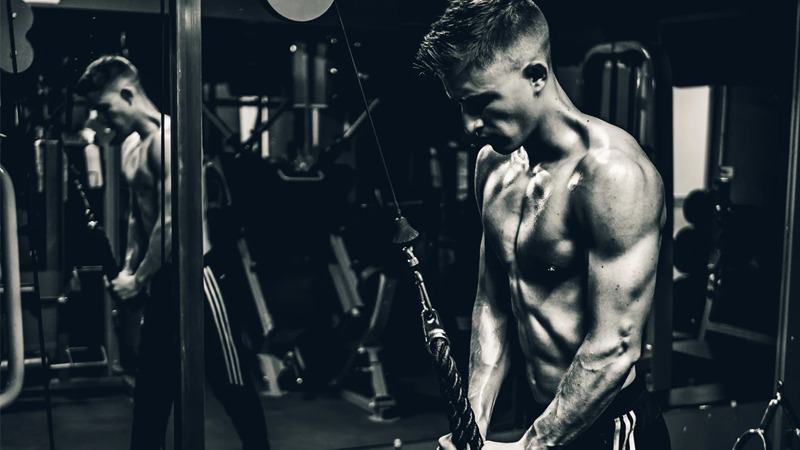
The Secret to Making Gains
Sorry to burst your bubble but there aren’t any secrets. There are, however, bits and pieces of advice and information circulating in gyms across the globe. These bits of info will typically make its way on to the internet at one time or another.
Once it’s been “published” on the web and seen by hundreds of thousands of gym-goers, someone, somewhere, will take said information and sell it to their Instagram followers. It’ll be sold as “secrets to building mass” or something similar to that. Sound familiar?
The Real Secret Is…
Work your ass off — in the gym and in the kitchen. The game of gains is one that has to be played with consistency and determination. It could actually be summed up into a cycle of four words:
Eat, train, eat, sleep.
That’s the basics of making gains. But to continue making gains, we need to employ progressive overloading, either by making increases in weight, increases in reps, increases in sets, or even increases in your caloric intake.
Progressive overloading is a much-overlooked—not to mention, an important—aspect of weight training. Why do you think some people look the same after going to the gym for more than a year?
Although, you can’t fault someone for not doing something that they didn’t know they should do.
The Bodybuilding Upper Body Workout
Yes, I do realize that there are too many bros training upper body and not enough training their legs — we’ll do a program devoted to leg training that could be used in conjunction with this upper body program.

In the meanwhile, this program should be plenty to keep you busy, hurting, and growing while you wait for your new leg day program to be conceived.
This upper body program will incorporate various intensity techniques that will allow you to keep making gains.
Progressive Overloading
In it’s most basic description, progressive overloading is to slowly increase the stress placed upon the body during exercise. Simply put, train harder than you did yesterday.
By progressively overloading the muscle, you are forcing it to grow. However, if these ‘stress demands’ that you place on your muscles aren’t maintained or if it becomes less, your muscles will begin to atrophy in size.
Practical Example of Progressive Overload
If you’re benching 225 pounds for 8 reps, eventually you’ll get stronger. But if you stay at 225 pounds, so will your strength. So what do you do? You increase the weight by 5-10 pounds and keep benching until 8 reps become too easy. Increase the weight again.
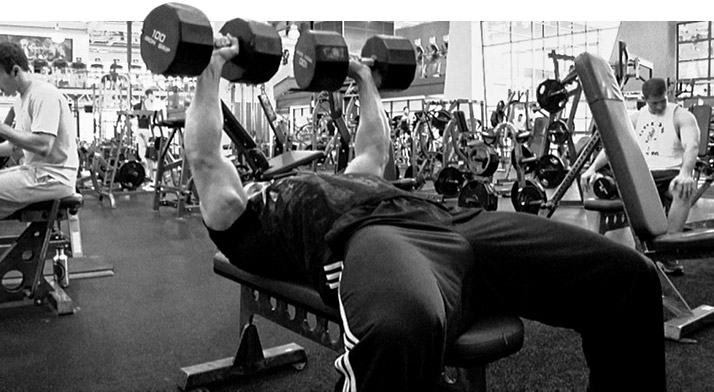
That’s one way of overloading the muscle. Another way is to add an extra set or do more reps. It’s best to overload the muscle with one thing at a time. Throwing too many things in at once will exhaust your muscles, leaving you high and dry for the rest of your workout.
With this upper body routine, there will be some form of progressive overload taking place each week. These changes won’t be excessive but they will be enough to incur a positive change in your physique.
The Nitty Gritty
The training days for the upper body workout are broken into two days. One day will be focused on training chest and back, and the other day will be reserved for shoulders and arms.
However, this program is designed to make your muscles grow — we’re not trying to maintain anything here.
Workout a) I — Chest and back.
Workout a) II — Shoulders, biceps, and triceps.
This workout scheme, however, is subject to change, and change it shall. After 4 weeks of following the aforementioned workout scheme, things are going to be switched around:
Workout b) I — Chest, biceps, and triceps.
Workout b) II — Back and shoulders.
We switch things up in order to disallow your body to get ‘used’ to the training program. Remember what we said about doing the same thing over and over? Well, allowing your body to adapt to a routine is like keeping it away from growing.

Intensity Techniques
Along with progressive overload, we’ll mix in a few intensity techniques.
Intensity techniques were created to give the body a shock. Training for gains and not incorporating any sort of intensity technique into your training is like running on a treadmill and thinking that you’ve actually covered some ground.
What to Do
I’ve given you the nitty gritty about the workout scheme, progressive overload, and intensity techniques, but now I’ll tell you how to incorporate it into the upper body workout program.
Progressive Overload in Training
With every second week of training, you’ll start adding more reps and more sets. Eventually, you’ll end up performing quite a few sets on specific exercises.
Adding Sets & Reps
Not all exercises will have more sets and reps added to them, only the ‘big’ exercises will see an increase in those two elements.
Every exercise with a single asterisk will increase with one set. Every exercise with a double-asterisk will increase with two reps.
* = Increase with one set.
** = Increase with two reps.
The exercises with these asterisks should be increased in sets or reps, every second week.
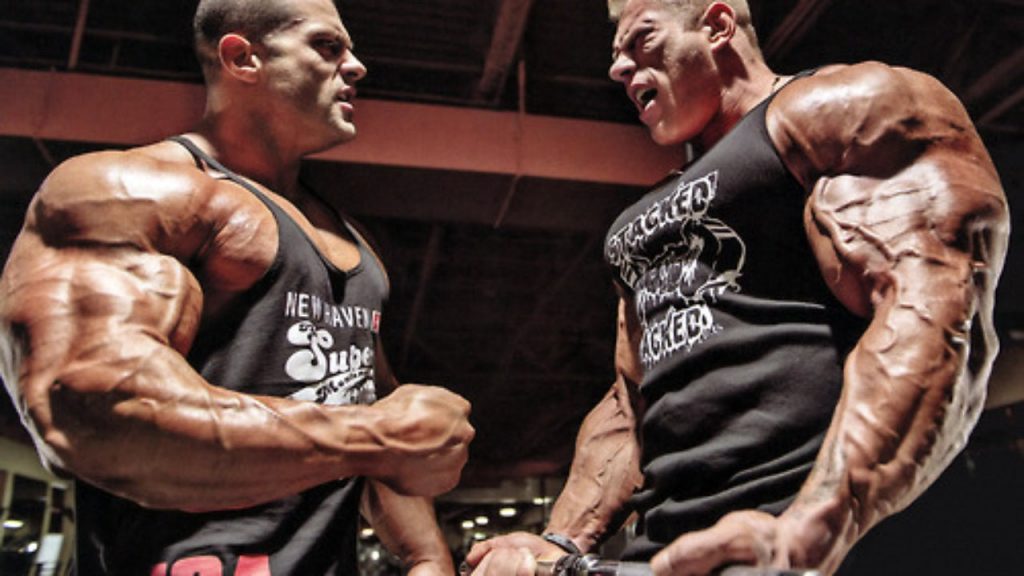
Intensity Techniques
The intensity techniques that will be used are going to be basic. Do not be fooled by that, as these techniques have stood the test of time and have helped sculpt the physiques of many champions over the years.
The techniques that we’ll use are dropsets, supersets, and slow negatives.
Upper Body Workout a) I
Barbell Bench Press * — 4 x 12
Bent-over BB Rows * — 4 x 12
Superset (SS):
(SS) Flat Bench DB Flyes ** — 4 x 12
(SS) Lat Pulldown ** — 4 x 10
Superset (SS):
(SS) Incline DB Press * — 3 x 15
(SS) Dumbbell Pullover * — 3 x 12
Upper Body Workout a) II
Military Press * — 4 x 12
Upright Rows — 4 x 12
Superset (SS):
(SS) Side Lateral Raises ** — 4 x 12
(SS) Front Barbell Raises ** — 4 x 10
Barbell Curls * — 4 x 12
Close-grip Bench Press * — 4 x 12
Superset (SS):
(SS) Rope Pressdown ** — 3 x 12
(SS) Preacher Curls ** — 3 x 10
Note: The sets and reps are left out of workouts b) I & II for the reason that you should continue where you left off with workouts a) I & II.
Upper Body Workout b) I
Superset (SS):
(SS) Barbell Bench Press *
(SS) Flat Bench DB Flyes **
Incline DB Press *
Incline DB Fly — Dropset.
Superset (SS):
(SS) Barbell Curls — Drop set.
(SS) Rope Pressdowns — Slow negatives.
Upper Body Workout b) II
Superset (SS):
(SS) Bent-over BB Rows
(SS) Lat Pulldown — Dropset.
Dumbbell Pullover **
Superset (SS):
(SS) Military Press **
(SS) Upright Rows **
Side Lateral Raises — Dropset.
Front Barbell Raises — Dropset.
Conclusion
As the title of the article suggests, this is, in fact, an intense bodybuilding upper body workout. We cannot be held responsible if you aren’t able to keep up with the program.
However, if you’ve got a few good months or years worth of training behind your gains, there’s no reason why you can’t or shouldn’t give this workout a try. After all, it’s only eight weeks long.
I’ll leave you with this:
“Stimulate, don’t annihilate.”



